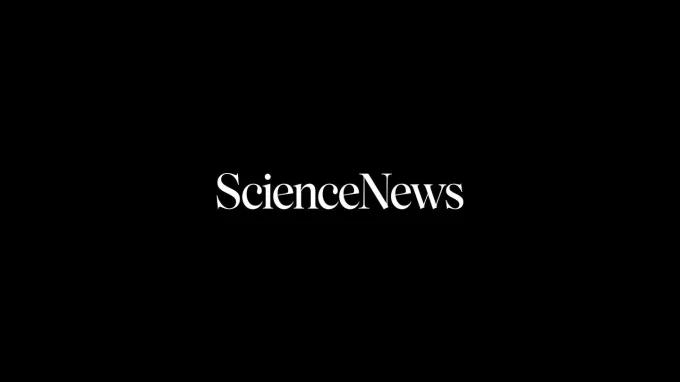Science News Magazine: Current Issue
Vol. 179 No. #12
Trustworthy journalism comes at a price.
Scientists and journalists share a core belief in questioning, observing and verifying to reach the truth. Science News reports on crucial research and discovery across science disciplines. We need your financial support to make it happen – every contribution makes a difference.
More Stories from the June 4, 2011 issue
-
 Humans
HumansNo nuts for you, Nutcracker Man
Tooth analysis shows huge-jawed hominid grazed on grasses and sedges.
By Bruce Bower -
 Life
LifeSickle-cell may blunt, not stop, malaria
Once thought to keep parasite out of cells, the trait appears to diminish the severity of infection.
-
 Health & Medicine
Health & MedicineCoronary bypass rates drop
Heart patients have been less likely to undergo the surgery since 2001, with many getting a less invasive procedure.
By Nathan Seppa -
 Space
SpaceSigns of dark matter from Minnesota mine
An underground experiment in the U.S. bolsters the case that Earth plows through a halo of dark matter particles.
By Ron Cowen -
 Life
LifeGiant ants once roamed Wyoming
The first complete fossil found in North America suggests warm spells in the far north allowed big insects to spread.
By Susan Milius -
 Earth
EarthWarming dents corn and wheat yields
Rising temperatures have decreased global grain production and may be partly responsible for food price increases.
-
 Chemistry
ChemistrySpray of zinc marks fertilization
Embryonic development begins with an outpouring of the metal, illustrating chemistry's importance in orchestrating biological processes.
-
 Psychology
PsychologyAutism rates head up
Disorders may affect more kids than previously thought, a study in South Korea suggests.
By Bruce Bower -
 Life
LifeAnimals quickly colonized freshwater
Fossilized worm burrows show that life had moved beyond the oceans by 530 million years ago.
-
 Space
SpaceCrab Nebula activity keeps confounding
Unusually rapid fluctuations in the output of a supernova remnant send theorists scuttling for a reasonable explanation.
By Ron Cowen -
 Humans
HumansNetworks dominated by rule of the few
Certain systems, including social hubs like Facebook, can be directed from relatively few control points.
-
 Humans
HumansStone Age cold case baffles scientists
Stone-tool makers who hunkered down near Arctic Circle left uncertain clues to their identity.
By Bruce Bower -
 Life
LifeBody attacks lab-made stem cells
In mice, the immune system targets and destroys reprogrammed adult skin cells, raising questions about their medical potential.
-
 Earth
EarthOzone hole on the mend
Researchers claim to see atmospheric healing more than a decade earlier than a detectable uptick was expected.
-
 Science & Society
Science & SocietyYouthful ingenuity honored at Intel ISEF
Young scientists receive awards for insights applicable to cancer treatment, homeland security, water supplies and more.
-

Science Future for June 4, 2011
June 27 Go behind the scenes of Houston’s Cockrell Butterfly Center. Go to https://store.hmns.org July 15–17 Swim with the world’s largest fish at the fourth annual Whale Shark Festival in Isla Mujeres, Mexico. More information at www.whalesharkfest.com
By Science News -

SN Online
BODY & BRAINBroken neural loops distinguish vegetative states. Read “Gravely damaged brains have ‘bottleneck.’ ” MATTER & ENERGYBird plumage inspires a new laser design. See “New laser is from the birds.” HUMANSDepression may boost individuals’ analytical skills. Read “Thinking better with depression.” LIFE Ancient fungi finally found. See “New fungi the dark matter of mushrooms.”
By Science News -

From the Archive
In the late 1950s, roughly half the astronomers who voted on whether the universe began with a Big Bang said “No.”
By Science News -

Lab Coats in Hollywood: Science, Scientists, and Cinema by David A. Kirby
A behind-the-scenes peek at how science consultants have helped movies such as 2001: A Space Odyssey and A Beautiful Mind try to present science realistically. MIT Press, 2011, 265 p., $27.95.
By Science News -

The Darwin Archipelago: The Naturalist’s Career Beyond Origin of Species by Steve Jones
A surprising look at Darwin’s lesser-known works uncovers the foundations of entire fields of biology, from soil science to early inklings of hormones. Yale Univ. Press, 2011, 248 p., $27.50.
By Science News -

The Theory That Would Not Die: How Bayes’ Rule Cracked the Enigma Code, Hunted Down Russian Submarines, and Emerged Triumphant from Two Centuries of Controversy by Sharon Bertsch McGrayne
The history of Bayes’ theorem and its controversial role in science’s use of statistics. Yale Univ. Press, 2011, 336 p., $27.50.
By Science News -

Dream Life: An Experimental Memoir by J. Allan Hobson
A candid memoir of the author’s career studying the neurobiology of sleep and dreams. MIT Press, 2011, 296 p., $29.95.
By Science News -

-
 Science & Society
Science & SocietyBlood Work
A Tale of Medicine and Murder in the Scientific Revolution by Holly Tucker.
-

-
 Health & Medicine
Health & MedicineHealthy Aging in a Pill
To extend life span, scientists envision a drug that mimics the benefits of a near-starvation diet.
By Laura Beil -

-

Letters
Nuclear recycling In all I’ve read in the popular press about spent nuclear fuel, including “Natural catastrophe begets nuclear crisis” (SN: 4/9/11, p. 6), all that is written about is on-site storage or burial. Why is reprocessing of the fuel never seriously considered? I understand that the French have done it successfully for years. Are […]
By Science News -

Science Past from the issue of June 3, 1961
ATOMIC ENERGY SEEN BEST FOR ROCKET POWER — Atomic energy is the most feasible source for powering rockets into the far reaches of outer space. A refined model of a nuclear power system now being developed could be used to propel space probes to Mars and Venus, [said] Dr. Glenn T. Seaborg, chairman of the […]
By Science News -

Atlas of Oceans: An Ecological Survey of Underwater Life by John Farndon
This richly illustrated survey of marine life introduces basic principles of oceanography and highlights the hazards of environmental degradation. Yale Univ. Press, 2011, 256 p., $50.
By Science News
